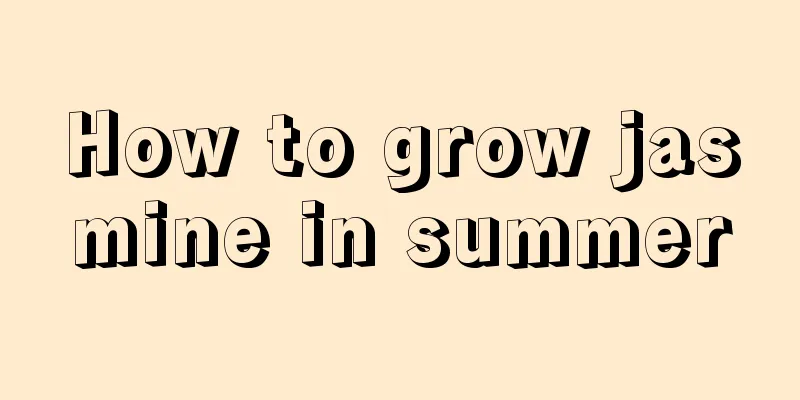How to grow peppermint well

1. Maintenance methods1. Temperature: Generally speaking, a temperature between 15 and 28 degrees is more suitable because it likes warmth. However, it has good tolerance to both high and low temperatures. It can tolerate temperatures as high as 40 degrees Celsius in summer and as low as minus 20 degrees Celsius in winter. However, if it is a seedling, the temperature cannot be lower than minus six degrees. 2. Light: The leaves cannot carry out photosynthesis without sunlight, but the light should not be too strong. It is better to place it in a place with scattered light. Once there is strong light, you can move it to a semi-shaded place. 3. Watering: Peppermint likes moisture. If it is too dry, it will cause its leaves to wither and other adverse symptoms. Therefore, it needs to be kept moist during the growth period, but not too moist. It is not suitable if there is stagnant water. In addition to normal watering in summer, you can also spray some water. 4. Fertilization: Peppermint requires very little fertilizer and has strong adaptability. Generally speaking, in addition to base fertilizer, top dressing is only required once every one or two months. 2. Breeding techniques1. Reproduction: It can be propagated by sowing, but the process may be troublesome. Sandy soil can be used as the substrate and the "pot sowing" method can be adopted. Lightly sprinkle the selected seeds on the substrate and cover with a thin layer of soil. After that, the temperature needs to be above 20 degrees, and then 10 degrees must also be guaranteed, which can promote their germination faster. 2. Pruning: During the growth period, it grows vigorously, so the branches and leaves will appear more vigorous, and sometimes very messy. Especially for peppermint planted in large areas, it will affect light transmission and ventilation, so if it is too dense, it needs to be repaired in time. Then, the dry branches and leaves should be cut off in time. 3. Problem diagnosis and treatment1. Diseases: Peppermint does not have too many diseases because it has relatively good resistance. "Anthracnose" occasionally occurs, which is prone to occur in conditions of poor ventilation and high temperature. Just spray the medicine and treat the diseased areas in time. 2. Pests: Overall, there are not too many. You can spray pesticides in advance for prevention and take timely countermeasures when they appear. IV. Other issues1. Toxicity: It is not poisonous and was used as a condiment when grown in Europe. 2. Can it be raised at home? Yes, its color gives people a comfortable feeling and makes people feel relaxed and happy. |
>>: How to grow tiger pineapple well
Recommend
Advantages and disadvantages of Arabian Nights rose
The Arabian Nights rose, also known as Snow Shara...
How often should I water the crabapple? It is better to water it every few days.
How often should you water the crabapple? Begonia...
How long is the growth cycle of wood ear?
Introduction to Fungus Growth Black fungus is a s...
How Wisteria Spends the Winter
How to spend the winter indoors? Wisteria grown i...
What kind of flower pot is suitable for dragon beard tree
What kind of flower pot is suitable for the drago...
When does Gardenia bloom?
1. When is the flowering season? Generally speaki...
How to grow white palm in a pot? How to grow white palm in a pot?
How to grow white palm in a pot Anthurium prefers...
Can the fruit of yew be eaten?
Can I eat it? The branches, leaves, wood and seed...
How to grow Lepidium
1. Soil: Lepidium can grow in most types of soil ...
Soybean seed sowing method
Soybean seed sowing time Soybeans are mainly sown...
Symptoms and prevention of hyacinth mosaic disease
Symptoms of hyacinth mosaic disease In the early ...
How to grow bluebird flowers
1. Breeding environment 1. Watering: It is not dr...
Does ginger lotus prefer shade or sun?
Does ginger lotus prefer shade or sun? Ginger lil...
Does the purple bougainvillea bloom frequently?
Bougainvillea purpurea is a common variety of Bou...
Why are there black spots on the leaves of hydroponic green radish?
1. The temperature is too low Reason: The tempera...









